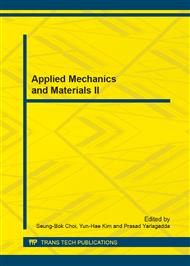p.236
p.240
p.246
p.254
p.259
p.265
p.271
p.277
p.281
Understanding Regular Waves Effect on Ship by Numerical Wave Tank Simulation
Abstract:
This study establishes three-dimensional numerical wave tank based on the theory of viscous flow to simulate the unsteady motion response of a Wigley advancing in regular heading waves. The governing equations, Reynolds Averaged Navier-Stokes and continuity equations are discretized by finite volume method, a Reynolds-averaged NavierStokes solver is employed to predict the motions of ship, and volume of fluid method is adopted to capture the nonlinear free surface by writing user-defined functions. The outgoing waves are dissipated inside an artificial damping zone located at the rear part (about 1-2 wave lengths) of the wave tank. The numerical simulation results are compared with theoretical and experimental data from Delft University of Technology, and show good agreement with them. This research can be used to further analyze and predict hydrodynamic performance of ship and marine floating structures in waves and help to extend the applications of numerical wave tank.
Info:
Periodical:
Pages:
259-264
Citation:
Online since:
December 2013
Authors:
Price:
Сopyright:
© 2014 Trans Tech Publications Ltd. All Rights Reserved
Share:
Citation:


